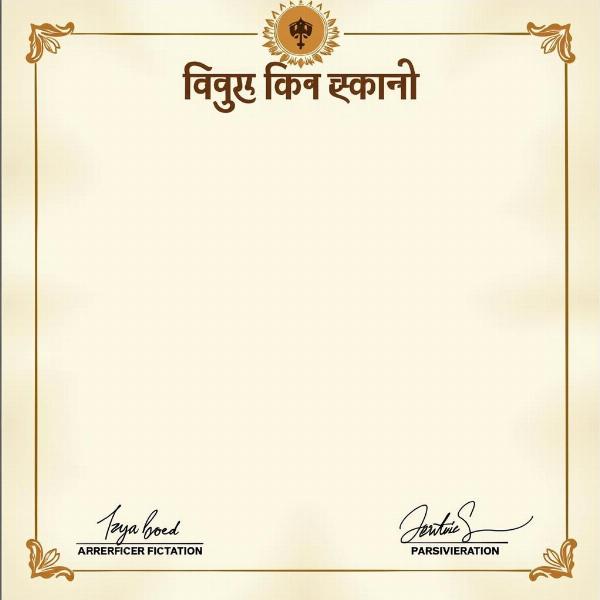Understanding the concept of “bipartite” is crucial for anyone delving into Hindi language and culture. While not a direct Hindi word, its implications are significant in various aspects of Indian life, from social structures to religious philosophies. This article aims to explore the meaning and relevance of “bipartite” in a Hindi context, covering its applications in different fields and its connection to Indian thought.
Understanding “Bipartite” in a Hindi Context
“Bipartite” essentially means consisting of two parts or divisions. While Hindi doesn’t have a single equivalent word, the concept is often expressed through phrases like “दो भागों वाला” (do bhaagon wala – having two parts) or “द्विभाजित” (dvibhajit – divided into two). It’s important to remember that the specific term used depends on the context. Whether discussing legal agreements, social structures, or philosophical concepts, the underlying idea of duality is central to understanding “bipartite” within a Hindi-speaking world.
Think of the traditional Indian family structure, often viewed as a union of two families. This inherent duality, the coming together of two distinct entities, reflects the bipartite principle. This is further exemplified in marriage ceremonies where two individuals, and by extension their families, are united.
Bipartite Divisions in Indian Society
Indian society has historically been characterized by various bipartite divisions, often based on caste, religion, or region. While these divisions can sometimes lead to complexities, they also contribute to the rich tapestry of Indian culture. Understanding these divisions is crucial for navigating social interactions and appreciating the nuances of Indian life. For example, the concept of “varna” in Hinduism, although often misinterpreted, originally represented a bipartite division of society based on occupation, later evolving into a more complex system.
Bipartite Concepts in Hindu Philosophy
Duality is a recurring theme in Hindu philosophy. Concepts like “purusha” (the conscious self) and “prakriti” (material nature) represent a fundamental bipartite division. Similarly, the concepts of good and evil, light and darkness, and creation and destruction are all examples of bipartite principles that shape Hindu thought. This understanding of duality is essential for grasping the deeper meanings embedded within Hindu scriptures and practices.
Bipartite Agreements and Legal Documents
In a legal context, “bipartite” refers to agreements involving two parties. This could be a contract between two businesses, a treaty between two nations, or a simple agreement between two individuals. Understanding the legal implications of “bipartite” is important for anyone involved in business or legal dealings in India. The term “द्विपक्षीय समझौता” (dvipakshiya samjhauta) is often used to describe a bipartite agreement.
 Bipartite Legal Document
Bipartite Legal Document
How Bipartite Meaning is Used in Daily Life
While perhaps not explicitly stated, the concept of “bipartite” underlies many everyday interactions in India. From negotiations between buyer and seller to discussions within a family, the idea of two parties coming together, often with differing viewpoints, is a common occurrence. This inherent duality shapes communication and influences decision-making in various contexts.
Conclusion
The concept of “bipartite,” although not a direct Hindi word, has deep roots in Indian culture, philosophy, and everyday life. Understanding its various applications, from social structures to legal agreements, is essential for navigating the complexities of the Hindi-speaking world. By appreciating the nuances of duality and its significance in Indian thought, we can gain a deeper understanding of the rich tapestry of Indian culture.
FAQ
- What is the exact Hindi translation of “bipartite”? There isn’t a single perfect translation, but phrases like “दो भागों वाला” (do bhaagon wala) or “द्विभाजित” (dvibhajit) are commonly used, depending on the context.
- How is “bipartite” relevant to Indian culture? The concept of duality is central to many aspects of Indian culture, from social structures to religious philosophies.
- What are some examples of bipartite divisions in Indian society? Historical divisions based on caste, religion, and region are examples, although their impact varies.
- How does Hindu philosophy use bipartite concepts? Concepts like “purusha” and “prakriti,” as well as the duality of good and evil, are examples of bipartite principles in Hindu thought.
- What does “bipartite” mean in a legal context? It refers to agreements or contracts involving two parties.
- How can understanding “bipartite” help me in India? It can enhance your understanding of social interactions, cultural nuances, and legal dealings in India.
- Where can I learn more about Hindi language and culture? Meaning-Hindi.in offers a range of resources and translation services to help you deepen your understanding.
Meaning-Hindi.in is your trusted partner for all your Hindi translation needs. We offer a wide range of professional translation services, from business and legal documents to technical manuals and website localization. Our team of expert translators ensures accuracy, cultural sensitivity, and timely delivery. Whether you need document translation, interpretation services, or website localization, our expertise in business, legal, technical, and educational translation ensures your message is conveyed accurately and effectively. Contact us today for a free quote and experience the Meaning-Hindi.in difference! Email: [email protected], Phone: +91 11-4502-7584. Connect with Meaning-Hindi.in for seamless Hindi translation solutions.